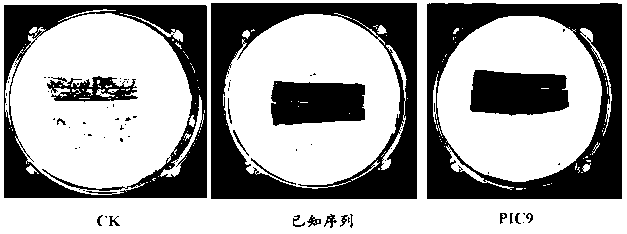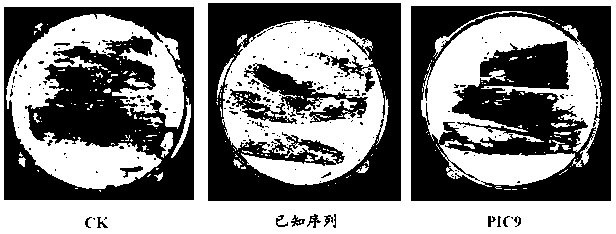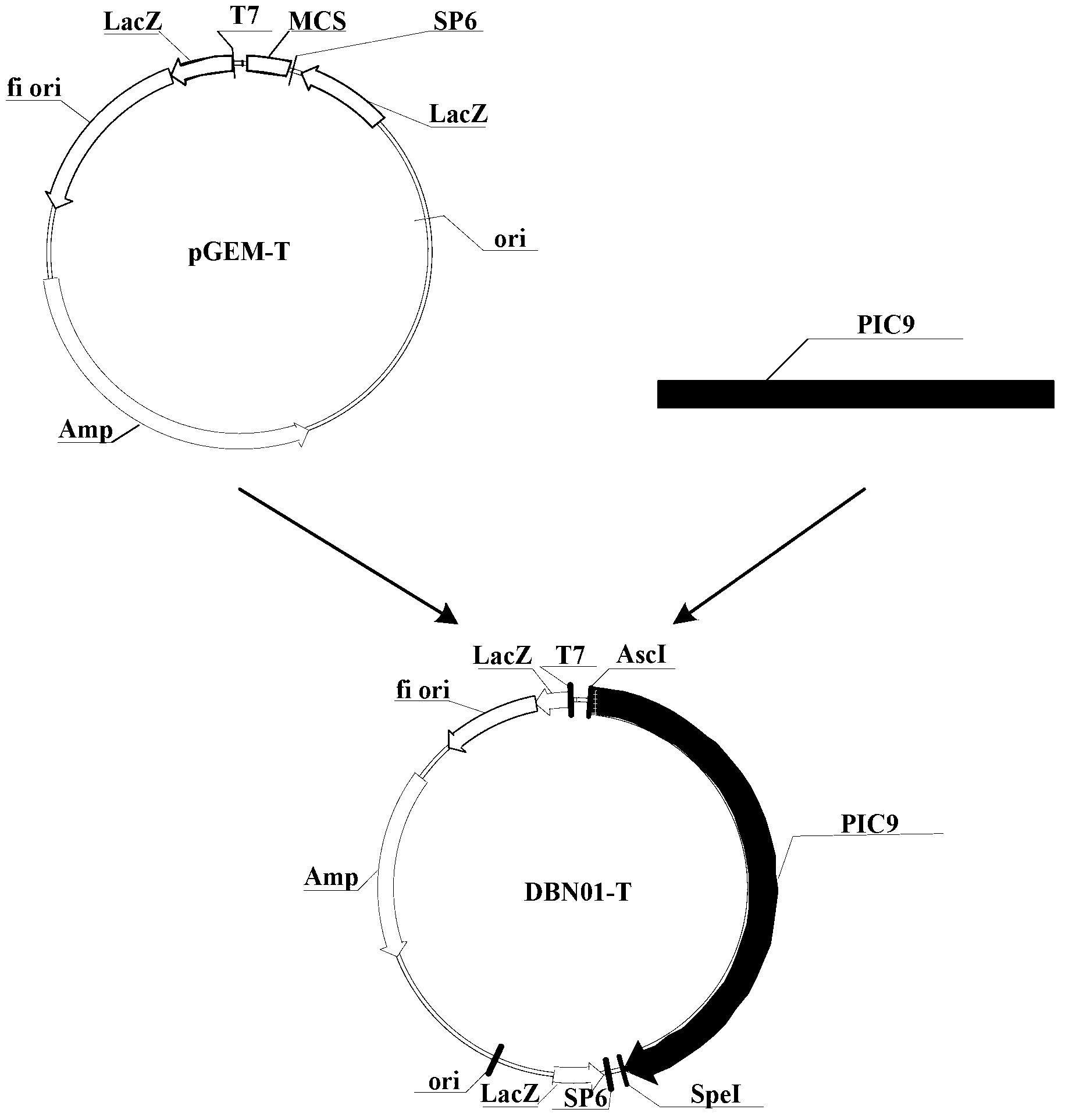Insecticidal protein, and coding gene and purposes thereof
A technology of insecticidal protein and insecticidal gene, applied in the field of insecticidal protein, can solve problems such as affecting the living conditions of the population, environmental pollution, and increasing production costs.
- Summary
- Abstract
- Description
- Claims
- Application Information
AI Technical Summary
Problems solved by technology
Method used
Image
Examples
no. 1 example
[0078] The first embodiment, the acquisition and synthesis of PIC9 gene sequence
[0079] 1. Obtain the PIC9 gene sequence
[0080] The amino acid sequence (650 amino acids) of the PIC9 insecticidal protein is shown in SEQ ID NO: 2 in the sequence listing; the amino acid sequence (650 amino acids) corresponding to the PIC9 insecticidal protein encoding is obtained according to the corn preference codon Nucleotide sequence (1953 nucleotides), as shown in SEQ ID NO:1 in the sequence listing. For maize codon usage bias, please refer to http: / / www.kazusa.or.jp / codon / cgi-bin / showcodon.cgi?species=381124.
[0081] 2. Synthesis of the above PIC9 nucleotide sequence
[0082] The PIC9 nucleotide sequence (shown as SEQ ID NO:1 in the sequence listing) was synthesized by Nanjing KingScript Biotechnology Co., Ltd.; the 5' end of the synthesized PIC9 nucleotide sequence (SEQ ID NO:1) An AscI restriction site is also connected, and a SpeI restriction site is also connected to the 3' end ...
no. 2 example
[0087] The second embodiment, construction of recombinant expression vector and transformation of recombinant expression vector into Agrobacterium
[0088] 1. Construction of recombinant cloning vector DBN01-T containing PIC9 nucleotide sequence
[0089] The synthesized PIC9 nucleotide sequence was connected to the cloning vector pGEM-T (Promega, Madison, USA, CAT: A3600), and the operation steps were carried out according to the instructions of the pGEM-T vector produced by Promega Company to obtain the recombinant cloning vector DBN01-T, which Build process such as figure 1 Shown (wherein, Amp represents the ampicillin resistance gene; f1 represents the replication origin of phage f1; LacZ is the LacZ start codon; SP6 is the promoter of SP6 RNA polymerase; T7 is the promoter of T7 RNA polymerase; PIC9 is the promoter of PIC9 Nucleotide sequence (SEQ ID NO: 1); MCS is multiple cloning site).
[0090] Then, the recombinant cloning vector DBN01-T was transformed into Escheric...
no. 3 example
[0108] The third embodiment, the acquisition and verification of corn plants transferred to PIC9 nucleotide sequence
[0109] 1. Obtaining corn plants transferred to the PIC9 nucleotide sequence
[0110] According to the routinely used Agrobacterium infection method, the immature embryos of the aseptically cultivated corn variety Zong 31 (Z31) were co-cultured with the Agrobacterium described in 4 in the second example, so as to infect 2 and 3 in the second example. T-DNA (including the promoter sequence of corn Ubiquitin gene, PIC9 nucleotide sequence, PIC9 substitution nucleotide sequence, PIC9 deletion nucleotide sequence, PIC9 addition nucleotide sequence, PIC9-Ab nucleotide sequence, known sequence, PMI gene and Nos terminator sequence) were transferred into the maize genome to obtain Corn plants transferred to PIC9 nucleotide sequence, corn plants transferred to PIC9 substitution nucleotide sequence, corn plants transferred to PIC9 deletion nucleotide sequence, corn pla...
PUM
 Login to View More
Login to View More Abstract
Description
Claims
Application Information
 Login to View More
Login to View More - R&D
- Intellectual Property
- Life Sciences
- Materials
- Tech Scout
- Unparalleled Data Quality
- Higher Quality Content
- 60% Fewer Hallucinations
Browse by: Latest US Patents, China's latest patents, Technical Efficacy Thesaurus, Application Domain, Technology Topic, Popular Technical Reports.
© 2025 PatSnap. All rights reserved.Legal|Privacy policy|Modern Slavery Act Transparency Statement|Sitemap|About US| Contact US: help@patsnap.com



